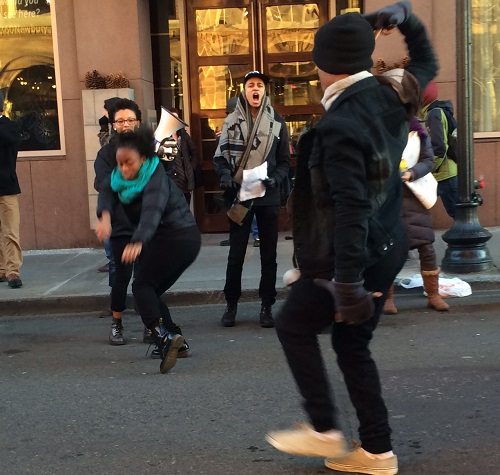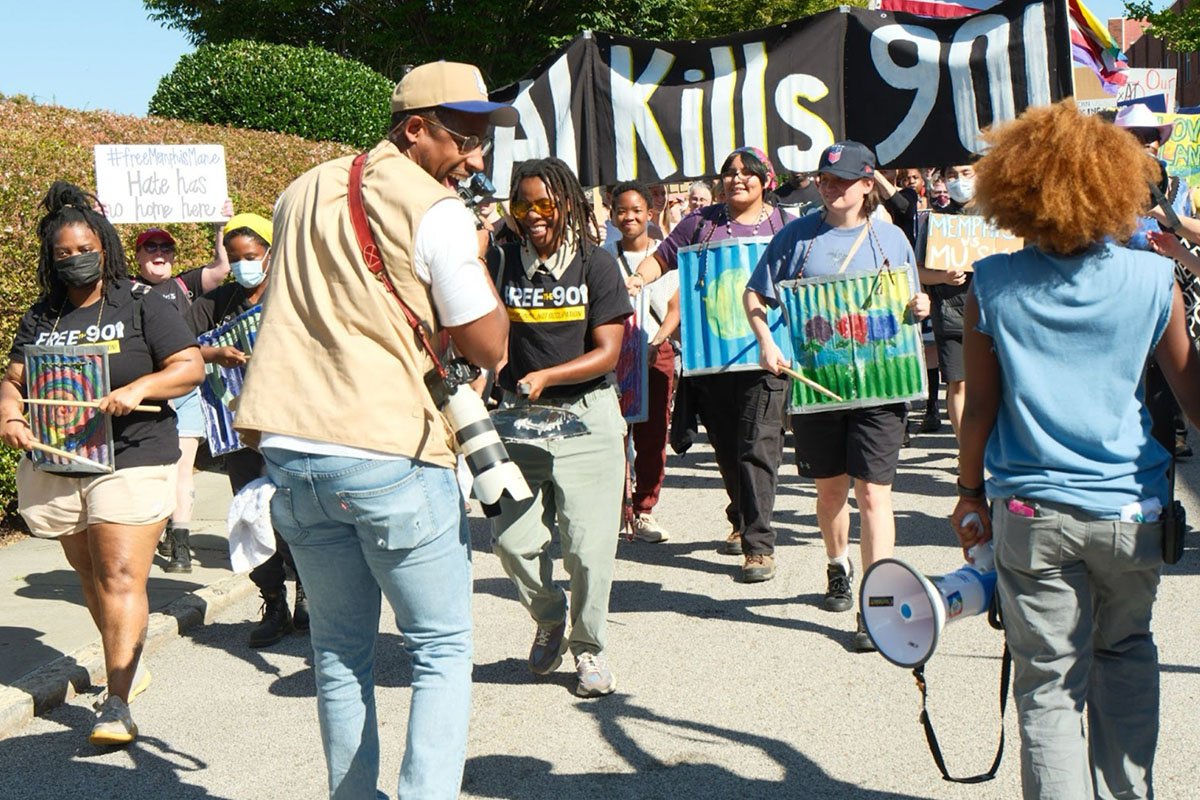
Image Credit: Shafaq Hasan
Predictions of any sort require some faith. That was certainly the case for Macbeth’s Banquo.
“If you can look into the seeds of time, and say which grain will grow and which will not,” Banquo said to the three witches at their cauldron, “speak then to me, who neither beg nor fear your favours nor your hate.”
Banquo lacked the blind faith to buy the witches’ prediction that he would be “lesser than Macbeth, and greater”—that is, he wouldn’t ever be a king, but his children would be kings. In the end, the witches were right…except that for their prediction to come true, Banquo wasn’t going to make it alive through Act III.
Without a cauldron or witches for guidance, and hoping that we do better than poor Banquo, our predictions here for 2015 are what we think characterizes reasonable views of the future, rooted in the past and present.
1. Governmental financial collapses will continue: Was Detroit’s bankruptcy—or its re-emergence as a result of the foundation-backed “Grand Bargain”—an anomaly? Regarding the bankruptcy, not if you consider Stockton and San Bernardino in California, both of which filed this past year. Probably many more would do so if they could figure out how to deal with the negative political perceptions tied to “bankruptcy.” There is little question that despite an improving national economy, many cities are collapsing under the weight of multiple pressures, especially underfunded or unfunded pension liabilities. It’s not just local governments, but states as well; for example, the pension debt of Illinois is four times the state’s entire revenues. One estimate is that the unfunded pension liability of states is $1 trillion with another $500 billion for cities and counties. Add other public sector debts, such as the Detroit Water Department’s billions that led it to turn off water to tens of thousands of Detroit households, and it is clear that local governments are staggering under multiple fiscal pressures and, as exemplified in Detroit, willing in some cases to place the onus on the backs of working and poor families. The circumstances that led foundations to ante up millions to help fund Detroit’s public employee pensions, with the trigger of the municipally owned Detroit Institute of Arts, may have been unique, but pension costs aren’t the only expenses that have governments reeling.
There are two obvious implications for nonprofits: First, even if they can’t replicate Detroit’s Grand Bargain, local and state government executives have been inspired by the Detroit experience to look at foundation endowments as potential contributors to fiscal bailouts and will knock on foundation doors when they can. Without good solutions at our disposal to deal with crushing municipal finances, those of us who have been government executives of poverty-stricken cities would be dialing foundations up regardless of a DIA-type nexus. Second, as the municipal fiscal crises deepen, their impact on operating nonprofits will be seen in reduced or eliminated grant support from general funds and from Community Development Block Grant dollars. Delays, reductions, and diversions of CDBG funds from typical nonprofit anti-poverty and anti-blight programs, as has happened in cities like Cincinnati, Providence, San Diego, Scranton, Paterson, Erie, and so many more, will be the norm going forward as revenue-strapped cities look to use formerly nonprofit-designated funds for their own expenses and priorities.
2. PILOTs will go west: Over the past few years, the bulk of the municipalities that have taken aim at tax-exempt property owners for all-but-mandatory tax-like payments have been in New England and the Middle Atlantic states—notably Pennsylvania, in communities from Scranton to Pittsburgh. In some instances, it is hard to fault tax assessors for rejecting exemptions for dubious nonprofits, such as Erie’s turning down the tax exemption request of the Youth Development Center, which happens to be the residence of 75-year-old Clara Ward who, she says, runs the “nonprofit” out of money from her pocket, though the home was the subject of an Extreme Makeover: Home Edition reconstruction.
Expect a geographically western movement in local governments’ interest in exacting taxes from tax-exempt property owners. Further, expect the constituents of the biggest tax-exempts in some cities—colleges and universities—to side with local government. One indication of that was the disruption of the annual holiday party of University of Pennsylvania president Amy Gutmann by Penn students demanding that Penn offer PILOT payments to help Philadelphia’s all-but-bankrupt public school system. Well-endowed colleges and universities are unlikely to get a pass on PILOTs, given their often insouciant rejection of requests that they divest from carbon-generating fuels, their ever-increasing tuitions and fees (up 1,120 percent since 1978, which is twice as high as the increase in medical expenses and four times as high as the increase in the Consumer Price Index), and the annual increases in the value of their endowments (for 2014, an average return net of fees of 15.8 percent on endowment investments compared to 11.7 percent in 2013, according to NACUBO-Commonfund data). When middle-class homeowners are hardly raking in money and college students are increasingly burdened by student loan debt—and with the University of Michigan coughing up a $48 million contract to hire Jim Harbaugh as football coach—it is hard for the average taxpayer to muster up much sympathy for big universities being compelled to fork over some money to municipal coffers.
The challenge in 2015 will be to make sure that the PILOT pressure on universities (and hospitals) doesn’t slop over into other types of nonprofits that are not as well-heeled and shouldn’t be taxed no matter what the circumstances.
3. There will be no hiding place for racism, overt or otherwise: As the year came to an end, some fans of the Washington, D.C., NFL franchise owned by Dan Snyder organized a tailgate fundraising event at FedEx Field before the game against the Dallas Cowboys. Titled, “Scalp Out Cancer: Because Bald Is Beautiful,” it was held at the exact same time as Native American groups, such as the American Indian Movement, the National Congress of American Indians, the NAACP, and others, were rallying at the stadium to protest the team’s racially disparaging nickname and mascot. The “Scalp” event organizer, Michael Kennedy, suggested that anyone complaining about the name of his fundraiser would be making “a fool of themselves [sic]” and that he would be offended if anyone was offended.
When told of the cancer fundraiser, Tara Houska, the organizer of the team-name protest, commented, “That’s insane. Really? They’re that clueless? […] That’s incredibly offensive. That’s the kind of thing that we’re basically saying is wrong.” Adding that her organization would never accept money from a fundraiser with the name of this event, Kris Rhodes, the executive director of the American Indian Cancer Foundation and a Chippewa, told the Washington Post, “I’m just dumbfounded. I have no words…it’s just so incredibly ignorant.” Yes, Tara, they were and are that clueless—though after the Post’s coverage, the fundraiser was quickly renamed “Shave Out Cancer.” (Kennedy said they would continue to sell “Scalp Out Cancer” beanies at FedEx, however.)
The time for giving racism a pass is drawing to an end. This isn’t a matter of being PC, but a new or renewed commitment of this country toward eradicating the vestiges of official, structural, institutional racism—ranging from the sanctioned, studious ignorance of sports teams to the nation’s failure to indict police for the use of unnecessary, extreme, and often deadly force when not warranted against persons of color—and attacking the roots and persistence of implicit bias. We expect that in 2015, racism will be ratcheted up as a top priority concern for nonprofits. The ability of nonprofits and foundations to turn a blind eye to philanthropic chicanery such as Snyder’s “Original Americans Foundation” will wane as racial justice activists call them out for tolerating programs and organizations whose existence is to perpetuate that which shouldn’t be tolerated in the nonprofit sector. Nonprofit and foundation trade associations may say they are not able to direct their members toward one kind of activity or grantmaking over another (although Independent Sector’s Diana Aviv did issue a statement to Nonprofit Quarterly eviscerating the Snyder foundation ploy), but racism isn’t a program choice. It is an affront to American values in the 21st century—or at least it should be, and a revived racial justice movement will make that abundantly clear in 2015.
4. The power of “slacktivism” will wane, replaced by real action: Perhaps it shouldn’t have come as a surprise that Invisible Children, the young, hip advocacy organization that hit public relations paydirt with its #Kony2012 hashtag and campaign, announced the process of its dissolution late this past year as it searched for $150,000 to keep its doors open. It might have been due to the fact that IC’s target, Ugandan warlord Joseph Kony, was on the run long before IC sold its $30 advocacy kits to young people in the vain hope that hundreds of thousands would mobilize to “paint the town red.” Millions watched the Kony video online, but watching online, tweeting a hashtag, wearing Kony2012 bracelets, and putting up stickers in dorms don’t necessarily add up to an advocacy movement of long-term import. Kony’s army is down to a band of stragglers as he hides—not in Uganda, but somewhere in Sudan or South Sudan—while the stories of his murderous rampages have been overtaken by equally heinous stories of young people killed in developing countries:
- Boko Haram in Nigeria, kidnapping girls from schools to make them slaves, wives, or suicide bombers;
- Taliban gunmen in Pakistan, not only shooting Malala Yousafzai in the face because of her advocacy of educating girls, but invading a school in Peshawar to kill more than a hundred students and their teachers, one of whom they set on fire in front of her students;
- The mayor of Iguala, Mexico, and his wife, who appear to have masterminded the murder and dismemberment of 43 students by drug gangs;
- The more than 495 Palestinian children killed during the Israeli assault on Gaza;
- Or, according to the United Nations, the “2,165 recorded deaths of children under nine years-old and 6,638 victims aged 10 years to 18 years” in the Syrian civil war.
As Kony’s insurgency faded into oblivion, IC could have devoted its energies to plenty of other horrors of military violence facing young people around the world, but it wasn’t to be. More to the point, IC’s fade to black may be due to the waning power of slacktivism. Slacktivism is “a uniquely American form of engagement in which statements are made without any real sacrifice,” writes the Washington Post’s Dana Milbank. “The slacktivist gets icy water over the head to fight Lou Gehrig’s disease, or tweets out hashtags to fight kidnapping in Nigeria (#BringBackOurGirls).”
The reactions to the death of Michael Brown in Ferguson and to Eric Garner in New York, just to name two of the unarmed black men killed in fusillades of police gunfire in 2014, though the killers escaped indictments, have gone beyond slacktivism. The debates over who can come up with the best hashtag (which works better, #blacklivesmatter or #alllivesmatter) are the debates of armchair activists. They may tip off the unaware that something important happened on the streets of suburban St. Louis or in Staten Island that is important—that’s what social media does—but it doesn’t take the place of real, tangible, organized advocacy, which requires more sacrifice that retweeting a hashtag or hitting “like” on Facebook.
Surprisingly enough, the Ferguson protests have led to concrete action—some from the White House, though not as much as needed, and even some from Congress, such as legislation to require states to report on police killings or else jeopardize funding they get from the Department of Justice. To make more headway on racial justice issues, for example, it will take more than hashtags and ice bucket baths. In 2015, that is the trend that nonprofits will see and hopefully lead: a return to social protest that mobilizes citizens off of their sofas to advocate for specific changes in policy and practice. Invisible Children’s rapid decline to invisibility, blindsiding even the young people it had purportedly activated, may have been the precursor to a revival of real social action over hashtagged selfies.
5. An IRS crisis is coming: (As though it weren’t already here.) The end of the Lois Lerner imbroglio of improper reviews of 501(c)(4) applications, which she admitted not in congressional testimony but in an answer to a planted question at an ALA program, hasn’t been reached as of yet, not by a long shot. However, Lois Lerner was hardly the first of the problems at the Tax Exempt and Government Entities division of the Internal Revenue Service. The TEGE division has been underfunded for decades, a fact that hit the public’s attention a decade ago with revelations about excessive CEO salaries, improper expenditures, and unjustifiable trustee fees at the Irvine Foundation, the Carl B. and Florence King Foundation, and any number of foundations reviewed by the Boston Globe’s investigative reporters, especially when the San Jose Mercury News reported from a former TEGE director that most of the foundation 990s aren’t even read by IRS staff and that the information they submit “can be in pig Latin and the return can pass the initial examination.” Years of underfunding the TEGE division, abetted by the unwillingness of national nonprofit and foundation trade associations to call for the dedication of the foundation excise tax to sector oversight functions, led to two trends at odds: increasing numbers and complexity of nonprofits and quasi-nonprofits to be reviewed and monitored, including the increasing variety of political (c)(4)s, crossed with the relatively stagnant staffing and capacity of the tax exempt division.
This past fall, as a counterintuitive punishment for the Lois Lerner scandal, Republicans in Congress savaged the IRS budget in the “CRomnibus.” IRS commissioner John Koskinen has countered with threats of having to temporarily shut the Service due to its lack of resources. In 2013, former IRS commissioner Mark Everson summarized the problems of the IRS as a “perfect storm”:
Sign up for our free newsletters
Subscribe to NPQ's newsletters to have our top stories delivered directly to your inbox.
By signing up, you agree to our privacy policy and terms of use, and to receive messages from NPQ and our partners.
“IRS senior management is retiring; the IRS is under a salary freeze mandate; career agents and examiners are being redeployed away from their desirable Fortune 1000 positions and more towards the middle market; they are having to administer various complex provisions of the Affordable Care Act with limited resources; and to top it all off, rank-and-file IRS employees are having to watch Senior Leadership cross-examined and vilified in front of Congress and the public at large due to the current emerging scandal…. My fear is that from this whole period people will become extremely cautious in how they perform their duties.”
Looking for oversight, guidance, and authoritative decisions from the IRS may be a relatively fruitless activity in 2015, with special implications for the IRS’s continuing inability to come up with clear definitions of political activity for 501(c)(4)s that do not interfere with the important and legitimate policy advocacy, public education, and voter registration responsibilities of 501(c)(3)s. Our suspicion is that the Service’s inability to come to grips with the political activity definitions in 2014 is simply a harbinger of upcoming paralysis in 2015, especially if the TEGE division is crippled by budget cuts, unable to recruit top flight leaders because of the Service’s uncertain budget situation, and unable to provide adequate training for those who are hired. If the nonprofit trade associations think that an immobilized IRS is to their benefit, they will be disappointed.
6. Charitable-giving incentives will gain staying power: As public policy, the 2014 tax extenders legislation was a mess, a conglomeration of important tax incentives such as the New Markets Tax Credit and the Low Income Housing Tax Credit—both flawed, but in the context of current public policy, important for the achievement of social goals—and truly abominable tax incentives designed for corporate special interests, high-net-worth taxpayers, and owners of thoroughbred racehorses and NASCAR tracks. The choice of Congress to approve these tax incentives in December meant that only the special interests with the most connected lobbyists were prepared to take advantage of the last-minute tax approval.
Nonetheless, there were incentives for charitable giving in the tax extenders bill that were generally popularly supported, particularly the IRA charitable rollover and the provisions covering donations of conservation easements. Whether or not these are necessarily the most important incentives for charity—or whether they truly do much to help the nation’s poor, which they don’t—they are neither harmful nor, in budget terms, expensive. The America Gives More Act has reasonably broad, bipartisan congressional support, which probably means in 2015, when both parties might have some motivation to appear cooperative, making the IRA rollover permanent rather than year-to-year is a policy goal that might actually happen.
That doesn’t mean, however, that nonprofit lobbyists should imagine that they will succeed in locking in itemizers’ charitable tax deductions at current rates to fend off President Obama’s repeated efforts to cap the deductions for high-net-worth taxpayers at 28 percent. Despite nominal interest in bipartisan comity, comprehensive tax reform is unlikely to be an area of congressional agreement, especially as the wings of both parties press for positions that the party establishments as well as the White House are unlikely to endorse. Congress is highly unlikely to reach an agreement about charitable deduction tax rates in 2015, but no one should believe that modifications are off the table for the long term.
7. The 2016 presidential campaign will be on our agendas in 2015: The campaign season starts earlier and earlier and will be in implausible deniability mode by the early spring. If the results of the 2014 midterm elections are any guide, nonprofits and foundations might have to be more than a bit industrious to be more than a passing thought to any of the numerous potential candidates. Few elected in 2014 acknowledged any engagement with the nonprofit sector in their campaign bios. For the next go-around, nonprofits will have to overcome the combination of the high-profile scandals repeatedly reported by ProPublica about the unreliable financial and program reports of the American Red Cross’s response to Superstorm Sandy, the fascination of both political parties with the newest social enterprise toys and fads such as B Corporations and Social Impact Bonds, and Hillary Clinton’s likely desire to keep the Clinton Foundation out of campaign scrutiny.
The challenge for nonprofits going into the upcoming prolonged presidential campaign cycle—as well as that for Congress—is that their message in 2015 is difficult to hear. Their identity or “brand,” so to speak, is getting eaten for lunch by for-profit social entrepreneurs and their quasi-nonprofit cheerleaders. A number of observers over the past couple of years, notably Lucy Bernholz, have hinted that the for-profit social enterprise sector, mounted atop tools such as B Corporations, social impact bonds, and “hybrid” entities such as L3Cs, has been conveying a message to legislators that the nonprofit sector isn’t really all that special and that much of what nonprofits do or say they can do can be done as well if not better than business-minded for-profits. This is hardly an ideological proposition. A great deal of the left wing of the Democratic Party, if outlets such as the Center for American Progress are any indication, are as attracted to SIBs, “pay for success,” the Corporation for National and Community Service’s “Social Innovation Fund,” and other somewhat fad-flavored tools as any pro-business mainstream Republican.
The unstated impulse behind many social enterprise adherents is that nonprofits are somehow less efficient than businesses, less intrinsically accountable, and less professional. But more troubling is the waning commitment of political leaders—and leaders in philanthropy—to building and strengthening a nonprofit “third sector,” an alternative to the huge swaths of the economy governed by smaller or larger profit motivations. Nonprofit Quarterlycaught on to this some years ago when Ralph Smith of the Annie E. Casey Foundation pronounced foundation philanthropy “sector agnostic” and liberated sector-agnostic followers who even proclaimed themselves “ambivalent” about the differences between nonprofit and for-profit “problem solving.” That movement has hardly abated. December’s “Season of Giving” debate in the New York Times was hardly a debate, as former Obama administration official Sonal Shah effused about the problem-solving potential in the combination of “the power of the heart with the power of the market” and Ford Foundation CEO Darren Walker, discussing charity and social enterprise as the equivalent of wrenches and screwdrivers in the philanthropic tool chest, described foundations as able and willing to “support organizational and operational excellence in all kinds of enterprises—whether for-purpose, for-profit or both.”
In the 2015–2016 election cycle, watch how nationally prominent candidates give lip service plaudits to nonprofits that emphasize individual volunteerism in the delivery of human services (think, for example, about the “CNN Heroes“ narrative) but put their policy muscle behind business-oriented alternatives, even if the latter are more innovative fad hyped by consultants and financial packagers than substance. If nonprofits don’t gear up to combat politicians’ obsession with novelty by bringing a sense of reality and dimension to their fetishes for SIBs, PFS, or other shiny new financing objects they may find, nonprofits and public policy in general will suffer. To do that, nonprofits had better work in 2015 on the increasing numbers of sector-agnostic foundation leaders who, unlike them, are likely to be camping out in the White House to educate President Hillary Clinton, President Jeb Bush, or whoever finds his or her way into the Oval Office in 2016.
8. The pendulum on the business of education will keep swinging the other way: Despite all the hype of the social entrepreneurial class that has at its core a strong element of privatization, the one area of some pushback on this has been, surprisingly, public education. The pushback in 2014 on Teach for America, not just because of its programmatic bias that teaching K-12 in public schools requires minimal training and no long-term career teaching commitment, but also because of its education privatization leanings, has been notable. It isn’t that the hedge fund players that support TFA have backed off from capitalizing the entity, but public debate about the efficacy of the TFA model has risen to the point where criticism of the previously almost-untouchable TFA has become at least tolerated and not always demeaned by acolytes as “tall poppy” jealousy. The mixed results of charter schools, the spate of charter school transparency and accountability scandals, and the often private sector DNA of charter school operators have generated discussion of these ostensibly “public” institutions. Even the big education reform foundations such as the Bill & Melinda Gates Foundation and the Broad Foundation have attracted criticism for their increasing influence in education policy in local school districts and in the federal pro-“reform” policies of the Obama/Duncan education program.
This is a trend from 2014 that is all but destined to continue in 2015, but the criticism won’t necessarily come from the teachers unions. Instead, look to education advocates—particularly nonprofit organizations of teachers, parents, and, shockingly, students. Increasingly, organizations like the interestingly-named Badass Teachers Association and Student Voice, which get teachers and parents involved and emphasize student participation in education decision-making, will be making themselves present and heard. The notions prevalent in today’s so-called education reform circles—that education can be separated from addressing the issues of poverty and lack of privilege, that education is simply a matter of technique (and technology), that “public” is somehow equivalent to ineffective in education—are all losing steam. Thanks to the persistence of critics such as Diane Ravitch and Anthony Cody, to name just two, but also to the emergence of groups like the BATs, the public debate over “education reform” is gaining momentum and will continue to do so in 2015. Few people will be persuaded by the obviously self-interested analyses of TFA that the increasing “polarization” around its methods and the decreasing number of people wanting to enroll as teachers in the program are due to Americans’ waning interest in education as a public issue. Moving from blaming public education to blaming teachers to (now) blaming the attention span of the American public is exposing the emperor’s new clothes in TFA and other reform groups.
9. Big donors will wear out their welcome: The willingness of nonprofits to take issue with the dominance of big donors, the ultra-high-net-worth donors who, through their own foundations or just their checkbooks, somehow manage to dominate some nonprofit and policy issues and expect to control and dictate to their grantees is a new trend that will continue in 2015. One Nonprofit Quarterly newswire writer, Marty Levine, calls the donor-control expectations of big donors “Kochism”: the expectation that large donors expect to govern their grant recipients—and perhaps government as well—though their philanthropic largesse. It isn’t just large donors, however. Smaller donors, still wealthy but making grants to small nonprofits, seem to carry the same baggage into the philanthropic transactions, increasingly expecting to dictate and demand from their grantees, often beyond the bounds of their grants.
The Koch fight from a couple of years ago to exercise greater control over the libertarian Cato Institute is just one of the rare public tussles between high-net-worth donors and their grantees, but there have been a number of other situations where donors have restricted or pulled their grants (or their names) from university donations because of the politics or subject matters of the instructors. Examples include the donor threatening to withhold $6.5 million from the University of Illinois because of the school’s hiring of an instructor who served in prison for a murder committed in the 1970s, more than one Illinois donor whose criticism of a professor of American Indian studies due to his blogging on Gaza got the university to rescind his hiring, or the Koch Foundation’s $2.8 million gift to Florida State University’s Study of Political Economy and Free Enterprise giving the Kochs the ability to approve or reject faculty candidates.
Although some online journals are now devoted to encomiums about billionaire donors and some experts are enthusiastic about relying on the blended money and wisdom of “philanthropreneurs,” expect more pushback from donees in 2015. In an era when Americans are tired of the disintegration of tenets of American democracy due to the unnecessary and anti-democratic influence of big money in elections, expect that nonprofits will be increasingly unwilling to defend charity and philanthropy as bastions of rich people’s top down decision-making—regardless of their ideological predispositions.
10. Presidential actions will carry more weight: It took President Obama six years of denial of authority to discover that he actually did have the authority to act on immigration reform, eliminate sub-minimum wage rates for employees of federal contractors and set a minimum wage for them of $10.10 an hour, normalize diplomatic relations with Cuba, and even declare December 26th a federal holiday (at least for federal workers). Just imagine what he might do in 2015. The president’s powers aren’t limited to executive orders, but also “presidential memoranda,” which, Glenn Kessler, the Washington Post’s “Fact Checker” columnist, notes are much the same thing in terms of their effect to direct governmental behavior.
Kessler points out that the Obama administration has tried to have it both ways, claiming to have been modest in its issuance of executive orders and presidential memoranda, which is not quite accurate, while touting the import of those actions on immigration and other issues. Having lost the momentum his administration might have had in the first two years of his administration, when he had a stronger congressional mandate, President Obama is all but certain to make the last two years of his administration, when he controls neither the House nor the Senate, one in which his legacy will be through executive actions that bypass congressional legislation. The quick little spate of executive actions that followed the November elections will almost assuredly be followed by more in 2015.
The challenge for nonprofits will be to get him to focus on actions that move the social agenda that many nonprofits hope for and support. What might be on the president’s executive action docket in the coming year? Possibilities include further actions on immigration (for example, protecting parents of “Dreamers” from deportation); wages (perhaps requiring federal contractors and subcontractors, who employ as much as 20 percent of the nation’s workforce, to pay a living wage of $15 an hour); expanding voter registration though federal agencies such as the VA, as recommended by the Brennan Center; taking a number of actions to require the disclosure of corporate political spending (including requiring disclosure by federal contractors and mandating that the Securities and Exchange Commission issue disclosure rules for publicly traded corporations); and exploring other potential actions in the areas of gun control and healthcare reform. If you were President Obama, what would you do? Spend next year practicing your veto signature, or take action on issues that in two years will be by the boards?
Unlike Macbeth’s witches, we didn’t chant, “Double, double, toil and trouble, fire burn and cauldron bubble” to make these predictions. However, we think the nonprofit sector will do better than Banquo, for unlike that unfortunate Scottish nobleman, ultimately killed by his friend Macbeth’s henchmen, nonprofits don’t have to rely on the prophecies of witches. As advocates and educators, nonprofits have some ability to craft their own futures.












